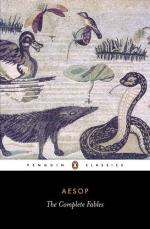|
This section contains 11,255 words (approx. 38 pages at 300 words per page) |

|
SOURCE: "Scholastic Commentary and Robert Henryson's Morall Fabillis: The Aesopic Fables," in Studies in Philology, Vol. XCI, No. 1, Winter, 1994, pp. 70-99.
In the following essay, Wheatley asserts that Henryson's edition of Aesopian fables depends on paraphrases and interpretations, intended to educate medieval readers about social or spiritual issues.
I
Modern critics have examined Robert Henryson's Morall Fabillis in relation to the sermons, popular literature, and political events of Henryson's day, but the fables have never been systematically compared to common educational texts, even though Henryson, a school-master, acknowledges the source for some of his fables as the classroom Aesop of his era. The Middle Scots poet took seven tales from one of the so-called "Romulus" collections, a group of sixty Latin verse fables probably written in the late twelfth century and generally attributed to Gualterus Anglicus (Walter of England).1 This collection became popular enough to displace Avianus's fables...
|
This section contains 11,255 words (approx. 38 pages at 300 words per page) |

|


